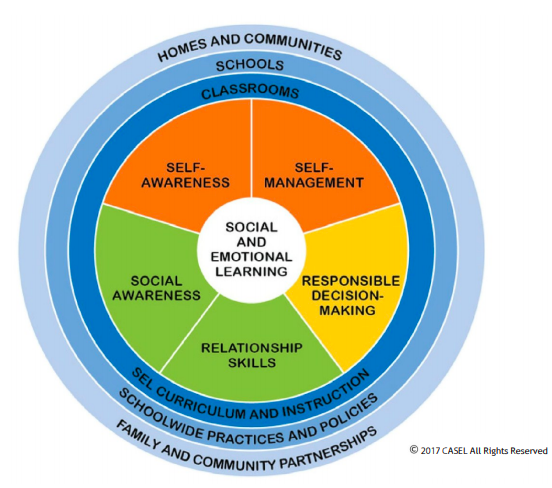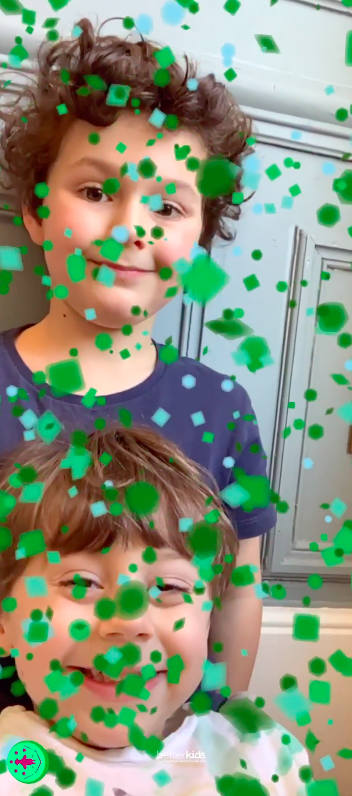As parents, we worry about whether our kids will make friends and will be equipped to adapt to life’s challenges. Social emotional learning, commonly shortened to SEL, represents the set of skills your child needs to thrive throughout their life. SEL is commonly described by five core competencies: self-awareness, self-management, responsible decision making, relationship skills, and social awareness. Very simply put, SEL allows children and adults to understand their own emotions and the emotions of others, and to use this understanding in their choices and relationships.
While “SEL” has become a common buzz word among educators, social emotional learning does not just occur in the classroom; it is an important part of our home, as well. Here are five easy social emotional learning activities for children (and adults!) to support SEL in your home:
1. Start a gratitude journal
You’ve likely heard of the many benefits that come from adults keeping gratitude journals. This daily dedication to giving thanks is not just beneficial for adults! Keeping a gratitude journal helps children increase their self-awareness and self-management; this daily time to express gratitude allows children to reflect on their lives and focus on positive aspects.
Create a gratitude journal - somewhere that your child can write something for which they are feeling grateful that day. Your child can decorate the front or even create the book themselves for added ownership and fun. Rather than write broad gratitudes like “family” or “food,” try to encourage more specific aspects of their lives. Use this template or these questions to help encourage deeper thinking and more precise gratitudes:
Who is one person that makes you feel grateful today?
What was one thing you ate today for which you feel grateful?
What is one thing you/ your body is able to do right now that makes you feel grateful?
2. Create a glitter jar
Certain visual stimulation can awaken our senses and calm feelings of anxiety or anger. Watching glitter swirling and floating in a jar of water can encourage children’s self-management, as they learn to pick up their glitter jar and calm their strong emotions with greater independence. While your child grows more practiced in using their glitter jar to manage strong emotions, you can help support them with prompts like these:
It seems like you are experiencing a big emotion right now. Would you like to take out your glitter jar? When it settles, you might be ready to discuss what happened.
Perhaps your mind is having difficulty focusing right now. How about you take out your glitter jar and take some deep breaths while watching the glitter settle? Let me know when you feel ready to focus again.
You might not have a solution to your problem right now but how about you take out your glitter jar to see if you get any ideas after watching it?
To create your own glitter jar you will need a jar, airtight lid, water, and a bit of glitter. This fun hands-on art activity will last a long time if handled with care, and offer great opportunity for social emotional learning. If you want to avoid the possible mess of a physical glitter jar, you can alternatively find similar effects online. For example, try the Augmented Reality (AR) glitter jar feature on the app, Wisdom: The World of Emotions (iOS, Android).
3. Write a letter or draw a picture for a loved one
Thinking about positive social connections gives us reason to reflect and feel joy. Even when children are just at home, they can think about the important people in their lives by writing letters or drawing pictures for others. This practice can help build children’s relationship skills and social awareness, even if they are working alone. Try encouraging your child with extra guidance:
Who is someone that makes you feel grateful? Someone that you are really glad to have in your life?
Who is someone that you think would love to hear from you? Someone whose days you could brighten?
Would you like to write them a letter or draw them a picture? Why don’t you tell me what you’d like to say in the letter and I will write it down (for children who are not yet writing independently).
What are some things you’d like to tell them / show them? Are there any questions you would like to ask them?
4. Make a schedule or list of to-do’s
Creating and maintaining a daily schedule helps children stay structured. It allows children to rely on a sense of predictability and safety. Being involved in this process allows children to practice responsible decision making and self-management. It gives children the opportunity to reflect on previous days and the day ahead, as they make choices in their schedule to help manage their emotions. To start this conversation with your child, try some of these prompts:
What are some things you would like to do tomorrow? Let’s make a list.
We have a busy day! Let’s sit to think about when we want to do what today.
Wow, look at everything you have accomplished today. What was the best part of your day? What are you looking forward to for tomorrow?
Check out this link for a daily reflection and schedule template that you can print for you and your child. Using a consistent format for scheduling your days can help support your structure.
5. Reset your body
When we experience strong emotions, our body responds. Certain practices, such as breathing exercises or stretching routines, can help children increase self-awareness and self-management of their emotional responses. There are many child-friendly breathing and stretching exercises that guide children and help them visualize their practice. Try the SEL app, Wisdom : The World of Emotions for an Augmented Reality (AR) breathing exercise or physical grounding game (visual shown below) for kids to follow along.
You may choose to do such breathing or stretching exercises at scheduled time of the day (perhaps before bedtime or as a daily break from homework). You may also choose to use these practices when at moments you and your child feel it could be helpful. Try some of these prompts as you and your child navigate good times to reset your bodies:
I notice you seem (insert: upset, distracted, tired, experiencing strong emotions…). Would you like to do a breathing exercise with me?
It’s been a long day. Why don’t we get our bodies and minds ready for bed with some stretches.
I think we can focus on this better after we reset our bodies. Would you prefer to focus on our breathing or stretching?
Better Kids’ Grounding Game - follow these 4 easy steps!
These activities are meant to be easy and meaningful ways to incorporate SEL into your home and into children’s lives. Give them a try and see how your children’s SEL skills strengthen and mature with practice!
If you are looking for more activities, try these art activities or these mindfulness activities. If you are an educator, these additional activity ideas for the classroom might be helpful.
A prior version of this article was originally published on April 2, 2020.








